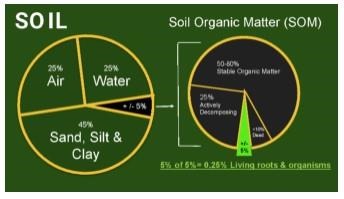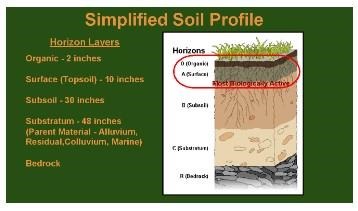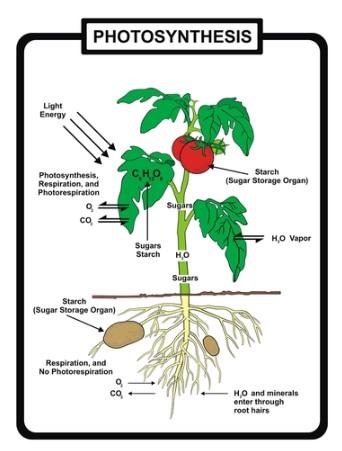By Kathrine Parsons
What is common among fruit trees, vegetables, flowers, living landscapes and grazing lands? They all grow in soil and require water. More importantly, they support all human and animal life either directly or indirectly. And it doesn't stop there; these living entities naturally cool earth temperatures and do a spectacular job of sequestering carbon. With that in mind, let's take a closer look at soil's makeup and how the precious commodity of water infiltrates it.
What is Soil?
Soil has a microcosm of living organisms. As shown in the Healthy Soil pie chart below, 45% of soil is a combination of silt, sand, and clay, while air and water make up 50% of the total content. Only 5% of soil is Soil Organic Matter (SOM) where the life force happens, but only 5% of this 5% (= .25%) feeds living roots and organisms.

Soil Organic Matter (SOM)
Soil Organic Matter is a living biomass of microbes, fresh and partially decomposed organic matter, and humus. It supplies the nutrients and food for the communities of microbial diversity within our soils. By increasing soil organic matter, the health and function of our soil is improved. In short, SOM is the critical part of soil that is alive.
Looking at soil's horizontal layers, the area circled in red below is the most biologically active layer making up approximately the top 12 inches. It's here that the vital Soil Organic Matter resides.

It makes sense then that a plant's healthy roots within the organic matter greatly contribute to a fertile soil biome. In the photosynthesis process, carbon dioxide is taken in through the leaves of a plant, carbon sugars are created. These carbon sugars feed the plant and up to half of it is exuded from the roots which feeds the living organisms in the soil. These sugars attract good fungi that attach to the roots, and which produce thread-like structures called hyphae that can extend for 300 yards. The hyphae together with the roots create an extensive root network capable of supporting not only the “parent” plant, but other plants in the same network. The hyphae slough off a super sticky substance called glomalin that glues particles of sand, silt, and clay together to create aggregates in the soil, thus providing space where air and water can infiltrate. What a system!

Simply put, plants in fertile soil with lots of SOM draw carbon from our atmosphere, store it in the soil, release oxygen for us to breathe, and help build an aggregate structure that allows space for air and water to infiltrate and be stored. Your plants will actually help you use less water by holding moisture in the soil.
Water Infiltration
When soil is porous via aggregated structure and plant roots, there's plenty of avenues for water to infiltrate. When healthy, porous soil is damp, the water already in the soil pulls new water down. Infiltration happens.
Conversely:
Dry, lifeless dirt has no porosity because it has no structure, and water will simply run off. Think about a storm when heavy rain is pelted onto dry, crusted ground. The water immediately runs off, leaving the ground as dry as it was before the rain.
Living soil has the structure to hold water. Keep it slightly moist and any added water will be absorbed.
In summary, there is a symbiotic relationship between plant life, soil life, human life, and our planet's life.
Common to all is the need for healthy soil and water. Our job as gardeners is to use water judiciously including setting up our gardens, landscapes, and grazing lands for the best water infiltration possible.
Source : ucanr.edu